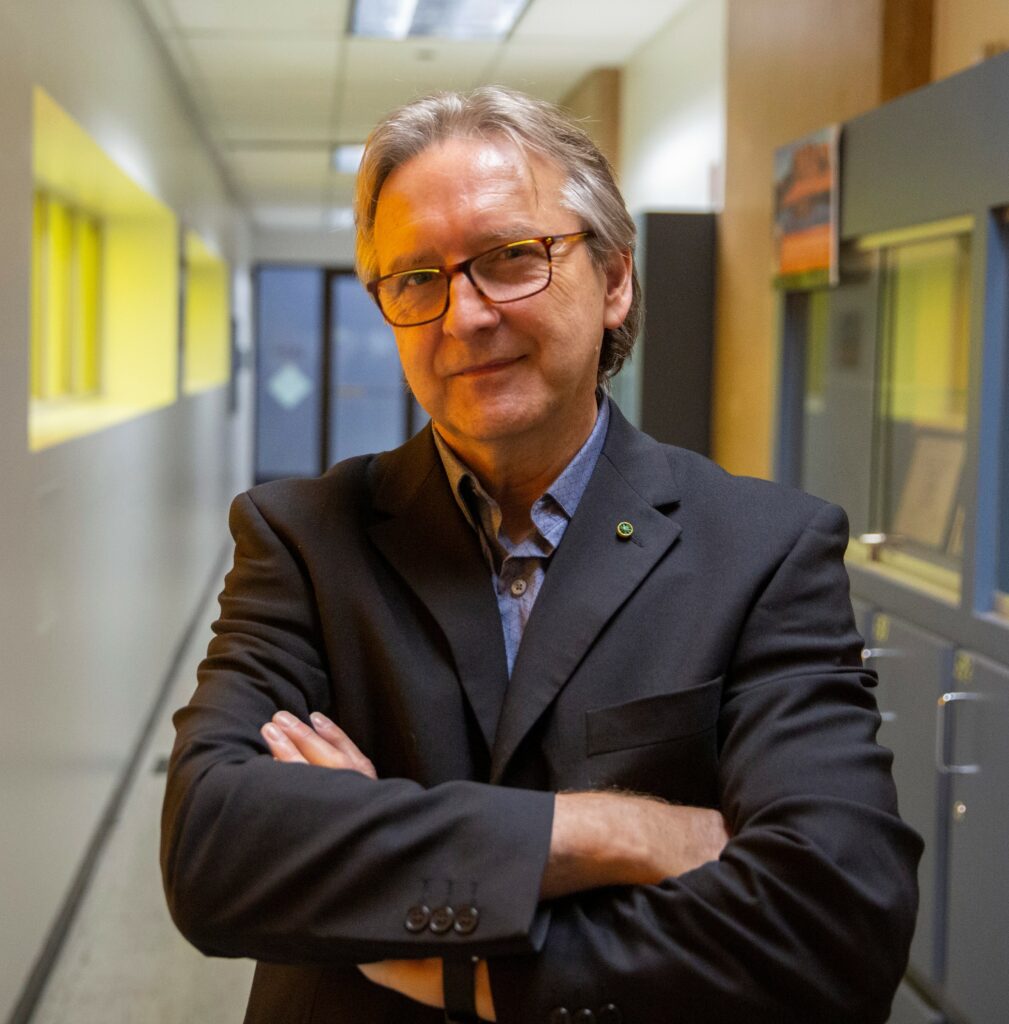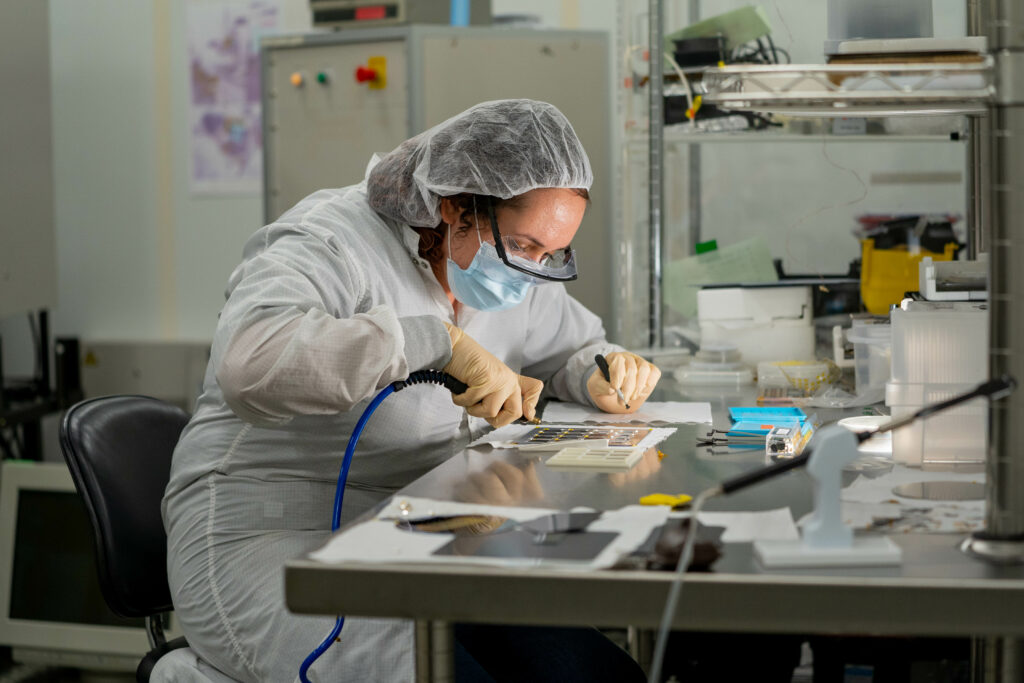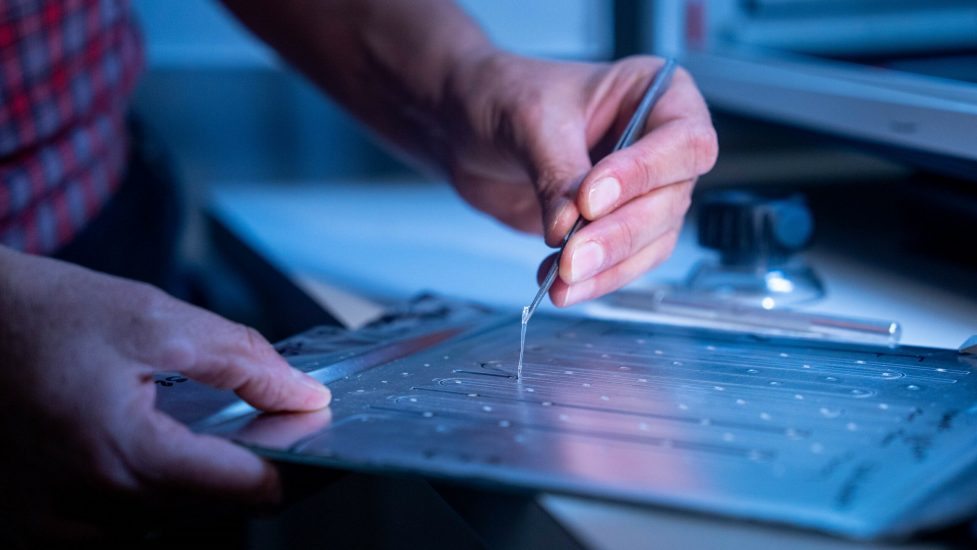The semiconductor chip shortage during the pandemic caused massive delays of everything from cars to appliances. And it highlighted the fact that the U.S. largely relied on other countries to make those high-tech chips. Currently, the U.S. accounts for 12% of the global share of semiconductor manufacturing, down from 37% in the 1990’s.
There is a major push to change that by beefing up domestic manufacturing through the CHIPS and Science Act passed by Congress last year. It includes $52 billion in subsidies for research and semiconductor production in the U.S.
Since 2020, companies have invested in an estimated 40 semiconductor projects around the country leading to the expected creation of 40,000 new jobs.
Needed: World-Leading Technologists
Arizona is seeing a growing need for engineers. In December, Taiwan Semiconductor Manufacturing Company, the world’s leading producer of advanced chips, upped its investment in north Phoenix to $40 billion, adding a second semiconductor factory in the state.

“The first one surprised me. The second one, literally, I had to sit down,” says Michael Kozicki, Ph.D., professor of electrical engineering at the Ira A. Fulton Schools of Engineering at Arizona State University.
“I don’t think I’ve ever seen anything this significant in terms of what it’s going to do for U.S. technology and what it’s going to do for the skilled workforce in the area.”
He adds, “You can’t have a world-leading fab without world-leading technologists. It just does not work.”
ASU’s engineering programs tout the largest college of engineering and technology in the country with more than 30,000 students. Among those students, 5,000 graduate as engineers each year.
That engineering talent is part of a pipeline for semiconductor companies, including Intel which has been operating in the state for more than 40 years. Its $20 billion-dollar investment to support chip factories at its Chandler campus is expected to be operational next year.
The Role of Universities

“Our ability to domestically manufacture and domestically translate research discovery to product is going to increase beyond what we can even imagine, so industries that are forward-looking recognize universities have a key role to play,” says Kyle Squires, Ph.D., dean of the Ira A. Fulton Schools of Engineering at ASU.
Those roles, explains Squires, include building teams to compete for federal research funding from the CHIPS Act. ASU also has its MacroTechnology Works research facility where ideas are piloted.
Additionally, the university recognizes it’s crucial to create workforce pathways. One example is its semiconductor processing graduate program where students can earn a certificate and essentially learn the process of engineering and creating semiconductor devices. The program is also offered online.
“We will continue to drive other programs to also offer this online modality because it’s another path to grow access to engineering. That will be important,” notes Squires.
To attract students who wouldn’t necessarily be drawn to only study engineering, Squires says new programs are being designed that he believes could be “game changing.” Called “Engineering Plus” – they would combine engineering with other interests like medicine, law, and finance.
“We think it’s going to be exciting but we want to be sure these students are going to be placed which is why it’s so important to bring those companies into the fold,” says Squires.

Giving the Semiconductor Industry a Second Look
For 25-year-old Javier Perez Torres, a career in the semiconductor industry wasn’t a goal when he set out to earn his bachelor’s degree and now his master’s degree in electrical engineering at ASU. His interest in how telecommunications work attracted him to engineering.
While attending school, Perez Torres is working full-time at Microchip Technology as an equipment technician and now sees a potential future working with semiconductors. “I started working here. I started to like semiconductor companies and now I feel like it could be one of my careers as well,” explains Perez Torres.

To prepare for his job, he credits the teamwork he experienced at ASU’s Engineering Projects in Community Service, specifically a project to create a solution for visually impaired students in Africa. “Dealing with people is the most important skill that we have out there,” explains Perez Torres.
He says he may want to run his own company one day and he also hopes, at some point, to return to his native Venezuela and give back to his community. “I just want to create solutions for problems. That’s my goal,” says Perez Torres.
It’s that kind of enthusiasm for engineering that ASU’s Kozicki says is going to be needed –starting well before college – to develop talent and fill the growing need for engineers. “We’re hoping to do a lot better from high school up in explaining what this industry is, what it does, and getting people enthused and excited about it.”
To get a sense of the salaries engineers in the semiconductor industry can command, the mean salary for electrical engineers, which encompasses a broad range of disciplines, is $117,000, according to the Bureau of Labor Statistics. A minimum of a bachelor’s degree is usually required.
Additionally, there are a number of job titles related to semiconductor chip manufacturing that do not require a college degree, according to a recent Brookings report – with a focus on the industry in Ohio.
The report states, “Broader discussions about pathways for underrepresented workers into the industry haven’t often been prominent.”
It continues, “Yet fabrication plant work holds out real promise for workers who lack formal degrees but are interested in increasing their pay by upskilling with specific credentials and certificates. While one-third of semiconductor industry jobs reside in higher-skill design activities, two-thirds—some 187,000 workers—are in the manufacturing workforce, according to Brookings Metro analysis of Bureau of Labor Statistics data.”
The report lists that among the positions requiring a high school diploma or its equivalent are semiconductor processing techs, machinists, and inventory clerks.











